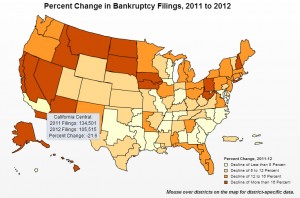A potential client called me last week for help in dealing with the IRS.
It seems he owed a lot of taxes for tax years from 1992 to 1996. Had he filed the returns on time? Yes. Had he filed bankruptcy in the meantime? No. Had he filed an offer in compromise? No. Has he heard anything from the IRS in the last three years? No, but he thought that was because he had moved and not written to the IRS collection department to tell them about the move. Has he filed a tax return from his new address? Yes.
I told him not to worry, that he probably didn’t owe the taxes anymore because it took more than 10 years for the IRS to collect those taxes. And it occurred to me that I should explain how statutes of limitation can work to the taxpayer’s advantage.
Audit and Assessment – Three Years IRS, Four Years FTB
The IRS has a three-year limitation period on assessment from the time of the return’s filing. That means that if three years pass from the time you, the taxpayer, filed your return, the IRS can no longer audit you for that tax year.
Sounds simple, right? But when did you actually “file the return?” Let’s take a return for the 2011 tax year. If you filed it before April 15, 2012, the law says that the return was filed on April 15. If you had an extension until October 15 and filed the return on September 1, the limitation period starts on October 15.
If you filed the return late, the law says that it was filed on the day the IRS received it.
In California, the Franchise Tax Board generally enjoys more liberal state laws than the federal IRS. The FTB has four years to assess more taxes on a filed return.
There is a big difference between how the IRS and the FTB go about “assessing” a tax, and how their audit procedures work. For the IRS, assessment occurs at the end of the audit process. Thus, the IRS generally tries to reach potential audit targets within a one-to-two-year window after the return is filed. If the three-year clock has been ticking for two years and ten months, and you haven’t heard from the IRS, you are unlikely to get audited for that year – although there are relatively uncommon exceptions. The IRS has to start its audit soon enough that it can complete the process and issue a Statutory Notice of Deficiency more than four months before the end of the limitation period, for reasons that are too complicated to mention here.
The relatively uncommon exceptions? The IRS gets six years to audit you if it can show a large understatement of income, and if it can show that your return is fraudulent, it can open the audit and assess at any time; there is no statute of limitations on a fraudulent return.
The FTB, on the other hand, assesses the increased tax as soon as it smells a problem. Like a deputized posse member who shoots first and asks questions later, the FTB starts its process with a Notice of Proposed Assessment; this counts as the “assessment” for purposes of the statute of limitations. This notice can be mailed on the last day of the four-year clock, and it’s still effective.
If the taxpayer gets audited by the IRS and agrees to a higher assessment, the taxpayer has a duty to inform the FTB within six months. The FTB then has two years to make its assessment. If the taxpayer doesn’t make the six-month deadline, there is no limitation period – the FTB has an infinite amount of time to make the assessment.
These assessment clocks can be tolled (and often are) by agreement between the taxpayer and the taxing authority. Sometimes this is a good idea, especially if the taxpayer just needs a bit more time to gather records to show to the auditor. Sometimes it’s a bad idea, if the tax authority’s case is not very strong.
Obviously, the laws strongly favor the taxing authorities: our legislatures want to make sure that people do not get out of taxes owed by skillful procedural. And while the FTB’s laws sound even more tilted against the taxpayer, there is a counterbalance: the FTB is generally less effective at opening and closing audits, and investigating a taxpayer’s affairs, than the IRS. “Generally,” of course, doesn’t mean that it can’t be extraordinarily effective if it wants to be.
Read more…





